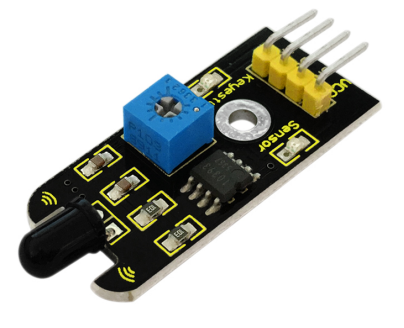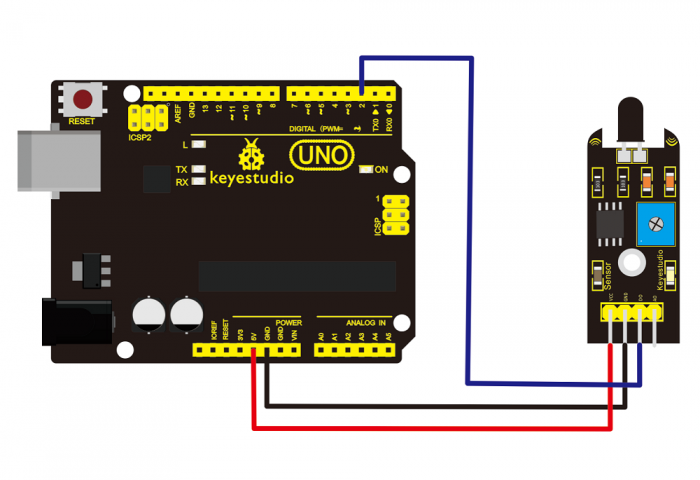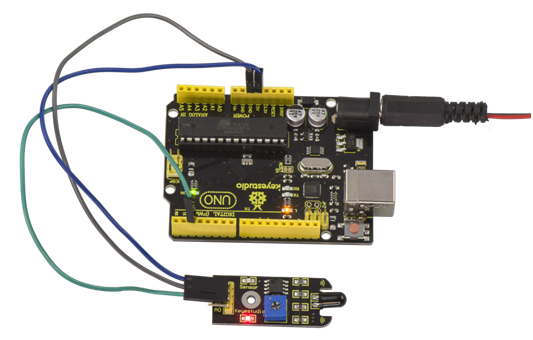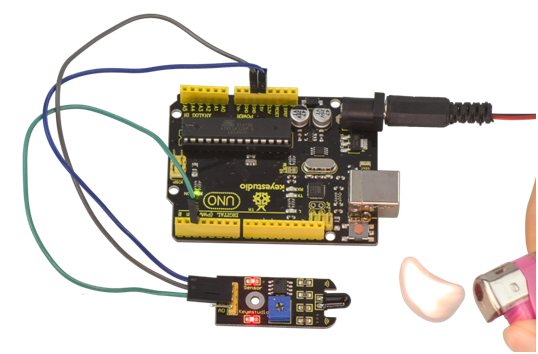Ks0036 keyestudio Flame Sensor: Difference between revisions
Jump to navigation
Jump to search
Keyestudio (talk | contribs) No edit summary |
Keyestudio (talk | contribs) |
||
| Line 59: | Line 59: | ||
http://video.keyestudio.com/ks0036/ | http://video.keyestudio.com/ks0036/ | ||
* '''PDF'''<br> | * '''PDF and Code'''<br> | ||
https://drive.google.com/open?id= | https://drive.google.com/open?id=1DQxFCtv2INPMO-vNHpZ54KMg8EWGdLvW | ||
<br> | <br> | ||
==Buy from == | ==Buy from == | ||
Revision as of 08:23, 19 April 2019
Introduction
This flame sensor can be used to detect fire or other lights with wavelength stands at 760nm ~ 1100nm.
In the fire-fighting robot game, the flame plays an important role in the probe, which can be used as the robot's eyes to find fire source.

Specification
- Supply Voltage: 3.3V to 5V
- Detection Range: 20cm (4.8V) ~ 100cm (1V)
- Rang of Spectral Bandwidth: 760nm to 1100nm
- Operating Temperature: -25℃ to 85℃
- Interface: Digital
Connection Diagram
Connect the D0 pin to digital 2, GND pin to GND port, VCC pin to 5V port.

Sample Code
const int flamePin = 2; // the number of the flame pin
const int ledPin = 13; // the number of the LED pin
// variables will change:
int State = 0; // variable for reading status
void setup() {
// initialize the LED pin as an output:
pinMode(ledPin, OUTPUT);
// initialize the pushbutton pin as an input:
pinMode(flamePin, INPUT);
}
void loop(){
// read the state of the value:
State = digitalRead(flamePin);
if (State == HIGH) {
// turn LED on:
digitalWrite(ledPin, HIGH);
}
else {
// turn LED off:
digitalWrite(ledPin, LOW);
}
Result

Done wiring and powered up, upload well the code to the board.
Then if you put a lighter close to the sensor, when the sensor detects the flame, another led on the sensor is turned on.

Resources
- Video
http://video.keyestudio.com/ks0036/
- PDF and Code
https://drive.google.com/open?id=1DQxFCtv2INPMO-vNHpZ54KMg8EWGdLvW